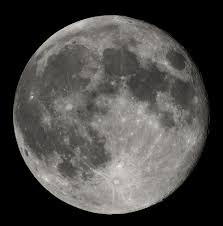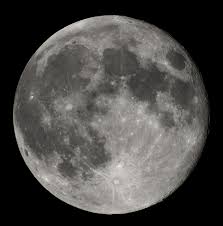The quintessential summer scene is a sunset after a long day at the beach. Relaxed and refreshed, the golden sphere of our sun descends in the west; purples and pinks blend into turquoise skies. The best of these summer sunsets happen when not only the west glows, but simultaneously in the east, a milky disk of the full moon appears low on the horizon. This summer of 2014, the full moons are special – they are super close to Earth.
As the moon orbits around our planet every 29 ½ days, its distance from the Earth changes, for the orbit is elliptical (oval-shaped rather than circular). The moon’s distance averages 239,000 miles or 387,000 kilometers away from Earth (imagine traveling around the equator of the Earth 10 times for comparison.)
Astronomers refer to the moon as “perigee” when it’s closest to Earth in its orbit (from Greek: peri- “close”, gi- “Earth”). This could happen during any moon phase – crescent, gibbous, half or new – but this summer, the moon is perigee when the moon is on the opposite side of the Earth than the sun; the alignment that gives us a view of the full moon. July, August and September full moons are perigee this year, with the August 10th moon the closest of the three.
While you’re moon gazing this summer, look closely at the dark and light patterns. The dark areas are heavy volcanic rock called maria (one is a mare). Once thought to be bodies of water, they were given names such as the Ocean of Storms, Sea of Tranquility, and mare nubium – the Sea of Clouds.Most of the moon surface is light-colored, rocky highlands called terrae, marked by round craters. Each crater has a name of a famous astronomer or thinker: Copernicus, Keplar, Tycho, Plato.
As you are anticipating the next super full moon this summer, observe which side of the moon is illuminated in its phase. Here in the northern hemisphere, the moon waxes (gets bigger) from right to left. Remember the phrase: “moon on the right, getting bigger every night”. So if the left side of the moon is illuminated, it is waning (getting smaller) toward a new moon.
The moon is caught in a dance with the Earth, with the same side (the “near” side) always facing us. This means the moon’s rotation on its axis takes the same amount of time as one revolution around the Earth – 29 ½ days. One day on the moon lasts as long as one month on the Earth!
Connect with our lunar neighbor during the next super full moons, August 10 and September 9 – super special this summer!

